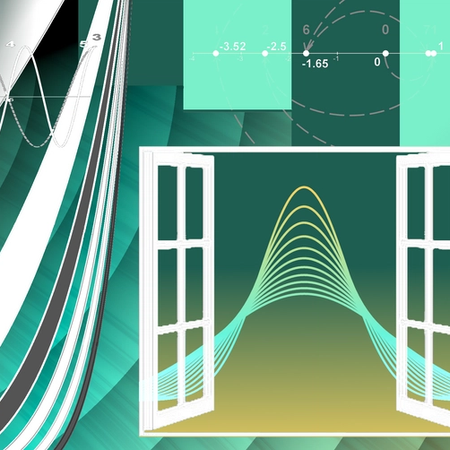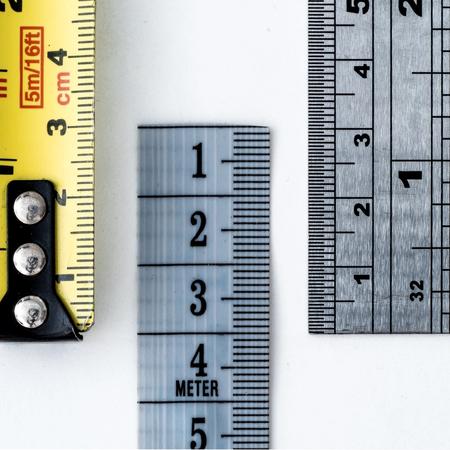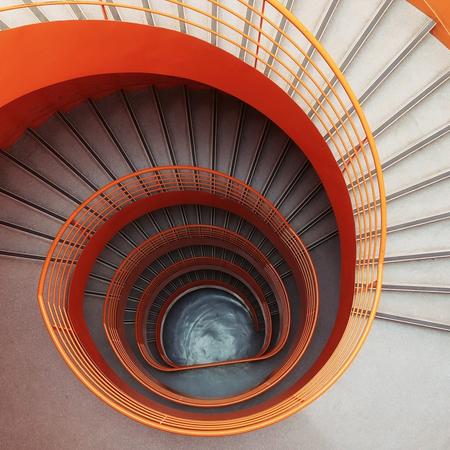One of my favorite gifts is this license plate from some of my colleagues. The phrase “I do math” captures something special. I’ve invested a lot of time studying math in school and after college. I’ve also had the privilege of using math in my career as an actuary. But both of these things are far different from what I call doing math. There are a lot of good resources on studying math and a lot of good resources on applying math. But Lazarus Math is a resource on doing math. You may wonder what the difference is between studying and applying math versus doing math. If I limit math to something I only study and apply, then it does not come alive. It is simply a tool, like a hammer. But math is not only a tool. It is also a painting, a piece of art that can be viewed from many perspectives. It is when I change my perspective of math from a tool to an art that my math comes alive. In short, doing math is about broadening perspectives and admiring what is in front of me.

I want to clarify what I mean by “doing” math. I do not mean that this requires adding more things to your “to-do” list. Adding more things to a to-do list may be productive, but it doesn’t bring things to life. Sure, doing math requires time and effort but not in a “to-do” list mentality. Rather, doing math is more about being aware of the world around us and the imaginary world we can enter. Doing math is being more aware of the context as to how math has arrived here and the people who contributed to this gift. So, when I am “doing math,” I’m not adding burdens to my schedule but being more connected to things that are beautiful.
How about you? You likely have studied math and you likely use math to some extent. But is your math alive? Do you truly enjoy math? I created Lazarus Math as a journey for your math to come alive. We will do math together, perhaps differently from you have ever done math before. This is not a study and we are not applying math, but we will be doing plenty of math. I hope you enjoy the journey, but my bigger hope is that it inspires you to do math the rest of your life.
Math coming alive
So what is our plan and strategy for math to come alive? If our goal is to study math, we would simply choose a subject and study it. If our goal is to use math, we would find ways math can be applied and we would learn and practice. But the goal of bringing math alive is a different goal and one that is not as easy to achieve.
Part of the challenge is you must train your mind to get out of the framework of studying and using the math that you have experienced. We naturally want to see well-defined problems and solutions in the back of the book. We want a teacher to spoon-feed us to make things as easy as possible so we can pass that next test and move on to the next math subject. This mindset might be fine for studying and using math, but you must change your perspective if you want math to come alive.
There is no better way I know to make math come alive than to make it part of an interesting story. So Lazarus Math is just a collection of stories I’m telling. If you hear the words “story” and “math” together, perhaps you think of the “story problems” from algebra. I think we all agree those problems are not the stories that inspire. My goal is to share stories that are rich in content and intrigue, where there is not an obvious right answer. The stories I share are ones that you can actually see yourself in. My hope is they surprise you and encourage different perspectives. All good stories relate to life. One goal of Lazarus Math is to tell stories that you can relate to in your daily living. A higher goal is for those stories to allow you to imagine something new and refreshing.
As we pursue this daring goal of seeing your math come alive, let’s consider some age-old questions regarding how, what, who, and why. There are no shortcuts on the journey we are on. But it will help if we consider these 4 questions first.
- How do we do math?
- What is doing math?
- Who does math?
- Why do math?
How do we do math?
Think like a child
If I say that one key for your math to come alive is to change your perspective, you might think of changing it from that of a student to a teacher. You might think you need the perspective of someone smarter in math than you. No. What I’m asking is to change your perspective to that of a child. I don’t mean the intellect of a child but the curiosity of a child, and not just the curiosity but the fearlessness of a child.
I have young grandchildren who enjoy watching math videos with me. My grandchildren are barely past the counting stage of math. Yet they are thrilled to watch a math video that involves calculus or linear algebra or any other topic way beyond their current level. They just follow the animation and repeat what they hear. They have repeated countless times the technical jargon we use in math, such as pi, i-hat, complex plan, neural networks, antiderivatives, etc. They see the symbols flash on the screen and squeal with joy as they recognize these symbols. They simply find joy in seeing these things come to life on the screen without the concern of understanding.
Hopefully, there are some stories in Lazarus Math that you will understand to the point that you can explain it to someone else. But there may be other stories that are above your current knowledge. I will do my best to make each story as accessible as I can, but there may still be some gaps. Don’t let those gaps stop you from finishing the story. Remember there are no tests. Even if you can’t follow every detail, I think there is benefit in persisting to the end. The value of Lazarus Math is not the destination but the journey. So stick with as much of the journey as you can. Have the courage and curiosity of a child.
I realize some of you want some guidance on the difficulty of the math so I’ve labeled each subsection as either level 1, 2, or 3, with level 1 being the easiest. Of course, skillsets do vary so you may sometimes find a level 2 that you think is more attainable than a level 1. But I encourage you to pursue all stories even if you cannot fully understand each step.
Thinking like a child is a good start for your math to come alive, for you to do math. To get a better idea of how your math can come alive, let’s ask the question: What is doing math?
What is doing math?
Perhaps this looks like a familiar problem in your textbook (Page 214, Problem 31)
Here is a solution in one of my textbooks.
This is a sum of an infinite geometric series. If the first term is and common ratio satisfies , then the sum of an infinite geometric progression as approaches infinity becomes
Does that inspire math? It is interesting but it doesn’t provoke my curiosity. Perhaps this is how you may study math. But to me, it is not doing math. Here is an example of what doing math feels like for me as I ruminate on this problem.
Find a paper, pencil, and ruler, then draw a segment that is 1 inch long. View the top teal line in the diagram below. Yes, you drew a 1-inch segment, but you also drew 2 segments, each inch long. Notice the second line shows the second -inch segment in orange. But you can also view the second -inch segment as two -inch segments. The third line shows the second -inch segment in red. Thus, you can view that what you drew as a -inch segment and two -inch segment.
Again, continue this process of slicing and dicing. You can consider the last -inch segment as two -inch segments. This is the fourth line, with the second -inch segment in yellow. Now, our 1-inch segment has been recast as a -inch segment, a -inch segment, and two -inch segments. We're starting to see a pattern develop, a pattern that makes sense. We can continue this pattern of taking the last segment and splitting it into two segments of equal length. Then, the length of the entire 1-inch segment as we can see from the bottom line is (teal) + (orange) + (red) +(yellow)+ (orange)+... Continue this process for as many terms as you want. The last segment in the graph stops at , so you can see we have not arrived at 1. In order to arrive at 1, we need the remaining terms and so on.
In the real world, this process would stop once you have a ruler that doesn't give any more precision, or a pencil that can't write a segment any shorter. If we had a computer, we could extend this calculation to a very large number. However, even a computer has a limit. Notice if we have the rule where we cannot repeat the last number in the process, we never actually arrive at 1. In other words,
never arrives at one for any finite number of terms in this pattern.
It is like we are walking to a wall and each step we take is the distance that remains to arrive at the wall. So, each step we get closer, but we will never arrive since by definition, each step only gets us halfway closer. You can observe that pattern in the chart where each orange vertical line cuts the remaining segment into two equal parts. We do not have a step that takes us "all the way there" in the finite world. But, in the math world, we do not have these physical limitations. So how does math finish this exercise? We will learn how math without limits can solve these types of problems.
Rather than memorizing a formula, we invoked a process. This process requires imagination. It also follows the intuition of symmetry. Because of the symmetry, it doesn’t feel like we did anything remarkable. We just created a simple pattern and followed it. A neat thing about this pattern is we can actually visualize it in the real world. We can see the line segment we wrote. We can take a 1-inch string and start cutting it. Now, the physical world has its limitations. At some point, we cannot draw a segment small enough or we can’t cut a string into a smaller piece.
But we used symmetry and the real world to start the process. Then, we can let our imagination and the wonders of math finish it. And it all just makes sense. However, if we stop and think about it, what we just did was truly remarkable. What this formula is saying is that if we don’t stop adding numbers in this pattern, if we just continue forever, then we actually arrive at something concrete and that concrete ending point is 1.
Once you stop and think about this, it’s a bit crazy. First of all, how can you actually add numbers forever? Then, if each number adds a little more to the total, how can you say that you arrive at a number when you never actually stop adding? Do you see the paradox here? This is heavy stuff that challenges the brain. There are many other interesting twists to this problem we could discuss if we wanted to. But the point is to see what we miss when we just think of a formula and plug and chug the formula to get the answer.
Doing math is taking time to think about things more deeply, to try to visualize the solution even if you can’t visualize the entire solution. In your mind, you want to see the solution. Notice how your perspective changed about this problem during our “doing math” exercise.
In general, that is what doing math is for me. I created Lazarus Math so you can also do math. I organized our Lazarus Math journey into three parts.
- Foundations. This is the beginning of math from sets to numbers to dimensions.
- Expanse. We quickly transition from the foundations to infinity and beyond. You will want to buckle your seat belt because we will travel far and wide. We view how math is connected to this concept of the infinite. We will try to connect things that we count to things we measure.
- Inhabit. We return to things we may experience in our daily life. We multiply, kick field goals, and meet interesting people.
Each part has sections. I plan to release one section a week to allow you to read and digest in a manageable way.
Now that we’ve had a taste of what it is like to do math, let us think about an example of a real person who did math that we can use for inspiration.
Who does math?
The amateur
This math giant was born in 1607 and lived in the exciting period of the Renaissance. It was a period of incredible change as the world transitioned from the dark ages to the modern world and modern way of thinking. People like Descartes, Shakespeare, Galileo, da Vinci, Copernicus, Pascal, Newton, Michelangelo, Leibniz, and Milton (just to name a few) lived during this time. Can you imagine living in a period when these people were your contemporaries?
This is the period where math, among others, came out of the dark ages. From the list above, we can see there were many great mathematicians during this time. But this is a story of an amateur mathematician. He was a French lawyer at the parliament in Toulouse, France. His hobby was doing math. It is difficult to conceive of a hobbyist who can compete with math giants. Yet he did. This amateur was a Frenchman named Pierre de Fermat. Here is a sample of the math Fermat did.
Fermat was instrumental, along with Descartes, in creating our modern geometry, which we also refer to as analytic geometry. Basically, this connects algebra and geometry. Some refer to algebra and geometry coming together as the greatest marriage in math. I like to think of this as a bridge between two subjects that used to be apart. The bridge between algebra and geometry is enormous. However, this bridge is an idea so common to us now that we don’t think twice of it. If someone stated the expression , it probably would be natural to think of graphing this expression on an -coordinate system using the function . The thought before this time was referred to the area for a square of length . Try to imagine a world before we could graph a function.

As amazing as this accomplishment is, it is only the beginning. We think of Newton and Leibniz as creating calculus. Yet, it was this amateur Fermat and other giants, such as Archimedes and Descartes, who created the fundamental ideas of calculus before Newton and Leibniz put more of the pieces together. I can’t begin to communicate what a monumental contribution this is.
As a practicing actuary, I am personally indebted to Fermat as he played a major role in the beginning of probability. He corresponded with Blaise Pascal and together, they developed part of the foundation for probability.
Despite these great achievements, perhaps Fermat’s greatest mark on history is being one of the founders of an entire new branch of math called number theory. Number theory is the study of integers. The thing that makes this amateur stand out is he is more famous not for the solutions he wrote but for the questions he asked. He stated ideas that he thought were true but could not prove. In math, nothing is true until it is proven to be true. But his math problems, one in particular, were the challenge of many great math people after him.
His most famous is referred to as Fermat’s Last Theorem. It is referred to as his last theorem because it is the last theorem he stated that was proven true. The great mathematicians who tackled this theorem would have made quite a list. Many were able to make progress on the proof, but nobody could finish it. We will discuss this theorem in more detail later in Lazarus Math. But for now, I want you to think about the skill of being able to state a problem that is so interesting that it attracts the greatest minds to solve it.
People usually aren’t required to work on these types of problems, but they choose to. Ironically, when Fermat posed this problem, it was likely considered just a theoretical question, one that had no mathematical importance. It wasn’t until 1995 that the proof was finally published by Andrew Wiles. Wiles had worked on the problem for at least 7 years in private so he would not attract attention. This is a modern-day math professional who spent 7 years working on something in secret. When you’re trying to make history in math, you don’t want to be bothered!
The surprise part of this is the solution is based on math that wasn’t even available in Fermat’s day. So the question is: what did Fermat see? Though he could not prove the theorem, could he see the essential part of the proof? Did he have another proof in mind? These are interesting questions to consider. More important, though, was the benefit of the solution that Wiles finished. The solution created bridges in areas of math that appeared to be miles apart. The proof opened up a whole new world of math and bridges in math. To me, this is math at its best.
What at first appears to be a simple theoretical problem without significance turns into one of the most important math problems of the 20th century. This problem has a 350-year span from beginning to end. And “the end” is really just the start of a new beginning. As I’ve read stories of great ideas from the math giants of the past, I’ve noticed that these people have an uncanny ability to work on a problem that did not appear important at the time. However, years later, usually hundred of years later, almost magically, these ideas find their way into solving some of life’s most perplexing problems. Let me be clear that this is not the goal for doing math. However, it is fascinating when it occurs.
I know it may be difficult to invest quality time doing math. In order to invest significant time, you must understand why you should do math.
This leads us to our final all-important question: Why do math? Specifically, why do Lazarus Math?
Why Lazarus Math?
Lazarus Math is the story side of math to escape to and enjoy. It invites you to slow down and ask questions, wonder, and be inspired. It is about the journey, not the destination. My goal for Lazarus Math is not that you just hear more stories about math and the greats that gave us this gift. Rather, the goal is that you will find your story in math. Once you find your story, you will see a new perspective on math that you did not have before—a precious perspective.
We will examine things we encounter in our normal daily lives that has profound math hiding in the abstract, patiently waiting to be discovered. We will dance, kick field goals, run, orbit the sun and cut pizza. We will ask questions that you may not have ever considered, all in hope of finding a gem that perhaps will open a door of discovery that is new and fresh.
At the risk of degrading math, I like to compare math to beer. Yes, there are millions of cans of beer out there that are consumed each day, just like there are millions of math problems out there to solve. But the math I enjoy is the special handcrafted math, to which some of the most creative minds in all of history have put their best R&D. I invite you to Lazarus Math to sample some handcrafted math problems, many of which have been curated for hundreds of years. I’m here to be your tour guide so that you not only sample handcrafted math, but it feels local and close to home. I want to present these stories in a way that is easy to consume yet does not sacrifice the flavor.
What I hope will happen when we are done with this journey is you will not be afraid of math but be drawn to math like a magnet. You will gain confidence that you can do math, that you have everything it takes to do and see amazing things. All this will give you energy to actually seek math (you read that right!) in hopes of finding an interesting and challenging problem that you have not thought of before. Trust me. If I can pursue interesting math and find new discoveries, then so can you!
I am not trying to motivate you so you will get better math scores or grades, though that may occur. I want to motivate you to gain a new perspective that will forever change your life. You will develop a brain muscle that will help you view life with an open mind and consider something bigger than your own thoughts. I think the one word we have for that brain muscle is empathy. Math has served me well in my career and I am grateful for that gift. But the creative and beautiful side of math is what has made a real impact on me and changed my life. It is only natural that I’d want to share that joy with others.
If you are ready to explore a different side of math, if you want math to be more real, then Lazarus Math is for you.
Let’s start at the beginning and build a solid foundation.
Credits
Lazarus Math certainly has been a team effort.
Thanks to my editing team for their detailed efforts: Chona, Jon, Dearric, and Sarah.
Thanks to Ben for help with some tricky math.
Thanks to the club Wave for patiently listening to me talking about these stories
Thanks to Baron for applying his magic and raising the bar on the graphs.
Thanks to Caleb for making the website pleasant for the reader and, more importantly, believing in this project.
Thanks to Carolyn for her creative drawings and the touch of class she added to the images.
Thanks to the customers and people at Coaching Actuaries who let me play with math and call it work.
Of course, any errors that still remain are mine alone.
And, most of all, thanks to my wife Julie who is my inspiration and, though I admire many historical figures, the one I care about.










